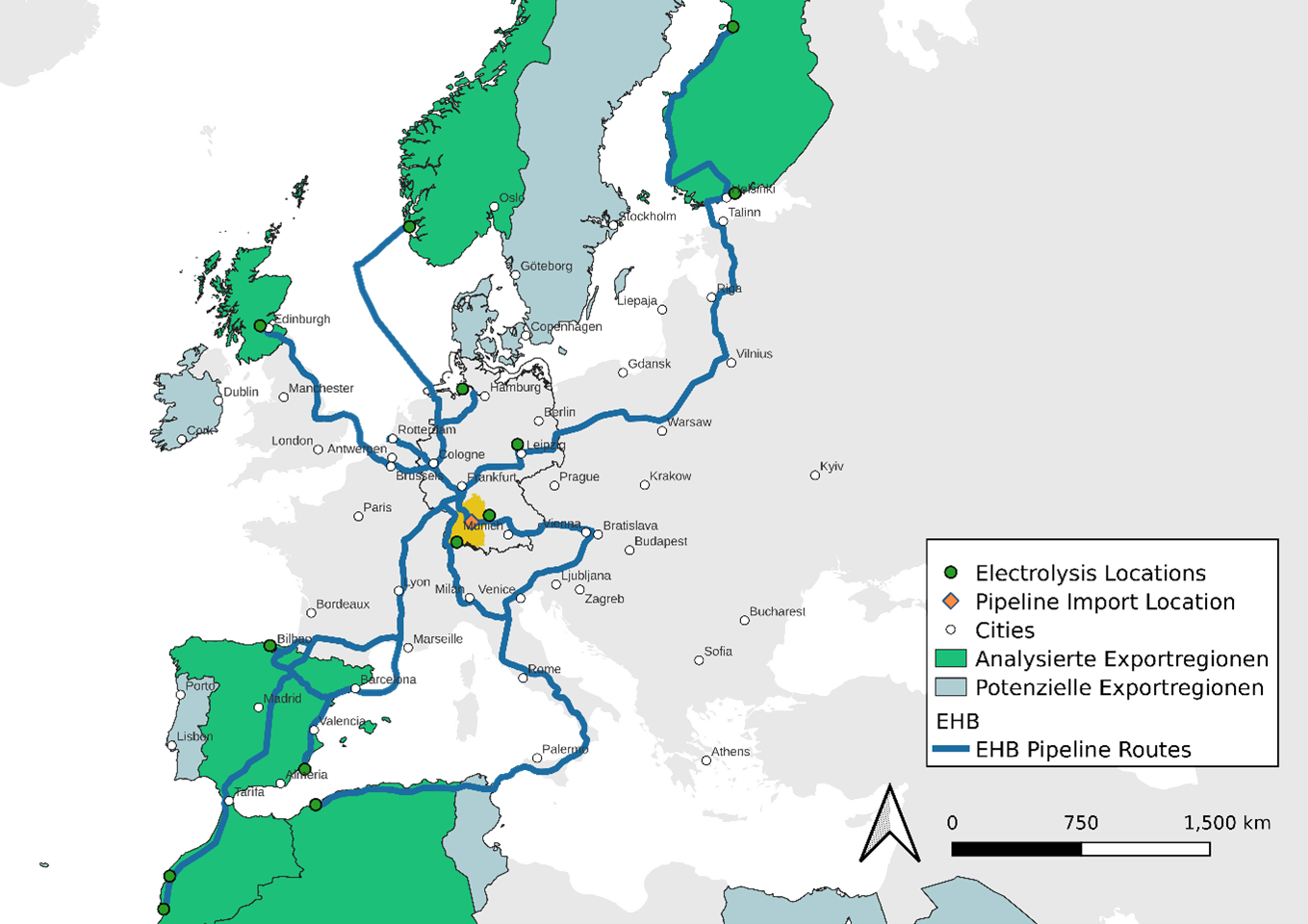Press Release #06
How will hydrogen come to Baden-Württemberg?
Baden-Württemberg will not be able to meet its future demand for hydrogen and its derivatives from domestic production alone. The Fraunhofer Institute for Solar Energy Systems ISE has therefore investigated how Baden-Württemberg can be supplied by imports in the future. The researchers analyzed how and at what cost hydrogen and its derivatives methanol and am-monia can be imported via pipelines and waterways. Production in Germany was also considered for comparison purposes. European pipeline transportation is therefore the most cost-effective option. The study was funded by the Baden-Württemberg Ministry for the Environment, Climate Protection and the Energy Sector.

In Baden-Württemberg, hydrogen is expected to be used in the future primarily for power plants to generate electricity and heat (approx. 60 percent), as well as for material use and the generation of process heat in industry (approx. 40 percent) and, to a lesser extent, in transportation. The Center for Solar Energy and Hydrogen Research Baden-Württemberg assumes a demand of 52 terawatt hours (TWh) for 2032 and 90 TWh for 2040. For the techno-economic analysis of the import of hydrogen and its derivatives, the Fraunhofer team looked at eight regions and countries: Eastern Canada, Algeria, Morocco, the United Arab Emirates, Norway, Finland, Scotland and Spain. Some of these countries already have strong partnerships with Germany and Baden-Württemberg in the form of economic agreements, energy policy declarations of intent or concrete project plans.
The renewable energy potential was determined for all regions and suitable locations for large-scale RE production were identified. The team then investigated whether transportation by pipeline or sea was possible, which energy sources could be considered and what costs would be incurred for production, transportation and possible reconversion. The import options were compared with the production of hydrogen in Baden-Württemberg and northern and eastern Germany.
In the case of ship-based transportation, liquid hydrogen, ammonia and methanol are the energy sources of choice, which can be imported from Rotterdam via the Rhine using inland waterway vessels. Ammonia and methanol can be used in material form as raw materials in the chemical industry. If gaseous hydrogen is to be transported to Baden-Württemberg via the Dutch and German pipeline network, the liquid hydrogen is regasified or the ammonia is reformed in Rotterdam.
Pipeline transport is the cheapest option
While transportation by ship offers the greatest flexibility in the choice of energy sources and import regions, transportation by pipeline - particularly from Germany and other European countries - is the most cost-effective alternative. The researchers at Fraunhofer ISE are working on the basis of the planned hydrogen routes of the European Hydro-gen Backbone. Accordingly, pipeline transports from northern and eastern Germany, Scotland, Finland and Spain have the lowest supply costs.
Due to the initially low capacity utilization of the pipelines, the supply costs are initially 3.2 to 6 euros per kilogram of hydrogen for the target year 2032. A forecast increase in capacity utilization by 2040 then leads to lower supply costs of 2.4 to 4.3 euros for 2040. Technological advances and efficiency increase in electrolysis as well as cost reduction potential for renewable energy sources are also included here.
The cost of transporting liquid hydrogen and ammonia by ship is expected to be EUR 6 to 10 in 2032 and EUR 5 to 7 in 2040. In addition to the more complex system structure, the high investments in liquefaction, storage and transportation (hydrogen) and reconversion losses (ammonia) also have an impact here.
Competitive hydrogen production in Baden-Württemberg is potentially possible and could also be realized at relatively low costs (4.3-4.9 euros/kilogram in 2032; 3.4-3.8 euros in 2040). However, the availability of land for renewable energy plants is limited, which is an obstacle to large-scale local production.
“The integration of the German grid into the European Hydrogen Backbone is important from a technical and economic perspective, but the study also shows that other transport paths could play a role in the future. This makes it possible to diversify the supply,” says project manager Marius Holst.
“Baden-Württemberg will continue to be dependent on energy imports in the future, for example in the form of hydrogen. To secure Baden-Württemberg's competitiveness, we must not just wait for the pipelines, but should also boldly promote other supply options,” emphasizes Dr. Tom Smolinka, Head of the Electrolysis and Hydrogen Infrastructure Department at Fraunhofer ISE.

Last modified: